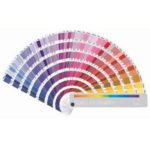Summary:
The article explores how the colors red and blue affect cognitive performance differently, based on a study conducted at the University of British Columbia’s Sauder School of Business. Red enhances attention to detail tasks by 31%, while blue promotes creativity almost twice as much. Associate Professor Juliet Zhu explains the psychological associations with each color, with red symbolizing danger and caution, and blue representing openness and tranquility. Even small cues of color in the environment can impact cognitive processes subconsciously, offering potential applications for productivity and creativity enhancement.

Do you think you need more red or blue in your life? Although the current economic crisis might prompt you to say, “Please, anything but red” faster than you can clip a coupon, there’s new research that shows that the colors red and blue each have a distinctly different impact on the brain.
In a yearlong experiment at the University of British Columbia, Sauder School of Business, 600 participants were asked to perform tasks on a computer that required either attention to details (such as proofreading or memory exercises) or creativity (such as brainstorming ways to use a brick). The background color of the computer screens the subjects worked on was either blue, red or, in some cases, white.
The results? According to the study, when a task requires attention to details, the presence of the color red boosts performance by as much as 31 percent compared to blue. But when the task demands more creative output, blue cues are a better choice than red by almost twice as much.
“Thanks to stop signs, emergency vehicles and teachers’ red pens, we associate red with danger, mistakes and caution,” says Juliet Zhu, Associate Professor at the University of British Columbia’s Sauder School of Business and author of the study. “The heightened state that red activates makes us vigilant and thus helps us perform tasks where careful attention is required to produce a right or wrong answer.”
Alternatively, Zhu says that because of an association with the sky, the ocean and the water, most people associate blue with openness, peace and tranquility. “The benign cues make people feel safe about being creative and exploratory. Not surprisingly, it is people’s favorite color.”
Zhu claims that it only takes a small amount of the desired color in an environment to make an impact. “You don’t need to paint a whole room blue to be more creative,” says Zhu. “These influences happen at a subconscious and subliminal level, so even a suggestion of the color works.” Zhu says that even something as small as the color of a pen, the background screen on a computer or the decorative items in a room can have an influence.
As a time management expert, I’m always interested in anything that can help people work better in a world with too many things to do, and too few resources to get them done with. As an artist and a writer, I’m fascinated by anything that can help me be more creative — so I decided to test this color conjecture out on myself.
I brought with me to a half-day creative writing workshop this past weekend a blue pad of paper and a blue ink pen, instead of my requisite white-lined notebook and trusty black Bic.
One of the reasons I wanted to take the class was that with all the non-fiction book, magazine and blog writing I’ve been doing this past year, I felt in need of a creative break — something to shake me out of my current pattern. So I took the class, and I used a lovely shade of periwinkle blue paper. But did it help my creativity? You tell me…
Blue Paper Poem by Karen Leland
I didn’t use red
Because I needed to shed
My old way of thinking
And clear out my head
Instead I choose blue
Which from the study I knew
Would not make me smarter
But crank up my creative juju
This post was originally published at Karen Leland’s Featured Small Business column on The Huffington Post.
